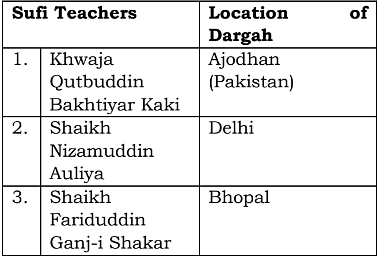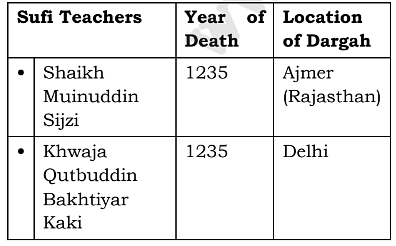OPSC OAS Prelims Paper 1 Practice Test - 1 - OPSC OCS (Odisha) MCQ
30 Questions MCQ Test OPSC OAS Mock Test Series 2024 - OPSC OAS Prelims Paper 1 Practice Test - 1
Which of the following statements are correct?
1. Soma was an intoxicating drink made in the Vedic period.
2. It (Soma) was a ritualistic drink.
Select the correct answer using the code given below:
What significant event occurred on January 15, 1949, regarding the Indian Army?
| 1 Crore+ students have signed up on EduRev. Have you? Download the App |
Which animal was recently classified as 'Vulnerable' on the IUCN Red List?
What theme was chosen for Indian Army Day in 2024?
Who was honored with the IMMA Lifetime Achievement Award?
What is the main goal of the World Economic Forum Annual Meeting in Davos in January 2024?
What recent development occurred regarding the Maldives' military relations with India?
What notable sports achievement did Rohit Sharma accomplish recently?
In which year was the Asiatic Society of Bengal founded?
What is the objective of the 'Yogyasree' scheme launched in West Bengal?
Consider the following statements about Muryan empire:
1. The Arthashastra was written in this period.
2. Some officials were appointed to collect taxes from the people.
3. The spies were appointed to keep a watch on officials.
4. Chandragupta Maurya embraced Buddhism after renouncing his throne.
Choose the correct answer choosing the codes given below:
Consider the following statements about Shankara deva:
1. He was a Shaivite.
2. He composed his poems in Bengali.
3. He began the practice of setting up of Namghars.
Which of the statements given above is/are correct?
Consider the following statements about Tantric practices during Medieval India:
1. Tantric practices were open to women and men, and practitioners often ignored differences of caste and class within the ritual context.
2. Those engaged in Tantric practices frequently ignored the authority of the Vedas.
Which of the statements given above is/are correct?
With respect to Mauryan art and architecture, consider the following statements:
1. The Barabar caves were a gift to the Ajivika sect by Ashoka and his son Dashratha.
2. The Sanchi stupa was originally builtv from stone.
3. The top of the Ashokan pillars display only lion motifs.
Which of the statements given above is/are correct?
Consider the following pairs:

Which of the pairs given above is/are correctly matched?
Consider the following pairs:
1. Lal Ded: Vaishanavite
2. Akka Mahadevi: Shaivite
3. Andal: Shaivite
Which of the pairs given above is/are correctly matched?
With reference to the Round table conferences, consider the following statements:
B R Ambedkar attended only the first and second Round Table conference.
The differences between Congress and Ambedkar in the Second Round Table conference led to Poona Pact.
Which of the statements given above is/are correct?
‘Direct Action Day’ on 16th Aug, 1946 was related to which of the following?
Which of the following trio of Indian nationalist leaders was known as ‘Lal-Bal-Pal’?
He was an Indian political leader and social reformer. He belonged to the moderate faction of Indian National Congress. He was also the founder of the Servants of India Society. He was also the mentor of Mahatma Gandhi. He was?
With reference to the ‘Rowlatt Satyagraha’, consider the following statements:
It was against the press censorship applied during the First World War.
It was most intense in the Punjab region.
Which of the statements given above is/are correct?
Who amongst the following were the members of Interim Government in 1946?
Liaquat Ali Khan
C H Bhabha
Somnath Lahiri
I. I. Chundrigar
Select the correct answer from the code given below.
Consider the following statements:
For Mahatma Gandhi the National Movement was not just a fight for independence but also a way of social transformation.
Mahatma Gandhi saw the charkha as a symbol of a human society that would not glorify machines and technology.
Which of the statements given above is/are correct?
With reference to the Khilafat movement, consider the following statements:
It was led by Muhammad Ali and Shaukat Ali.
It was started to support the Ottoman empire.
It was supported by the Congress party.
Which of the statements given above is/are correct?
Which of the following is/are warm ocean currents?
Canary current
Mozambique current
North Equatorial Current
Select the correct answer using the code given below.
In the neighbourhood of the Aleutian Islands in the Pacific Ocean and between Greenland and Iceland in the Atlantic Ocean low-pressure centres are found due to which pressure belt?
Consider the following:
Dal lake
Wular lake
Pangong Tso lake
Loktak lake
Which of the lakes given above are freshwater lakes?
Tropical Cyclones are violent storms that originate over oceans in tropical areas. In this context, consider the following conditions:
sea surface temperature higher than 27° celsius.
absence of coriolis force.
high variations in the vertical wind speed.
Which of the above condition is/are favorable for the formation of tropical cyclones?
Which of the following is/are sedimentary rocks?
Coal
Slate
Potash
Chalk
Limestone
Granite
Select the correct answer using code given below.














